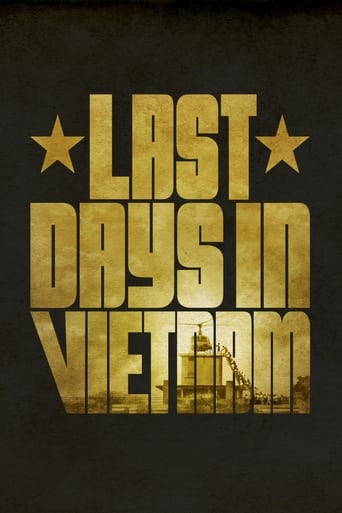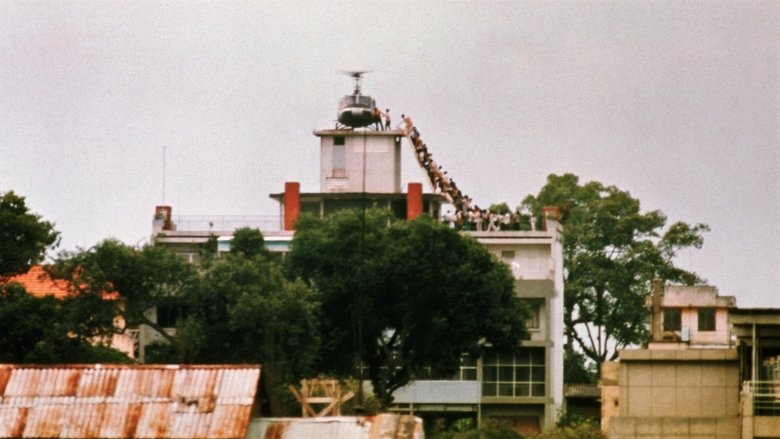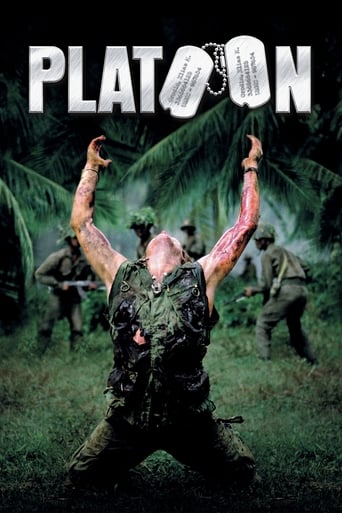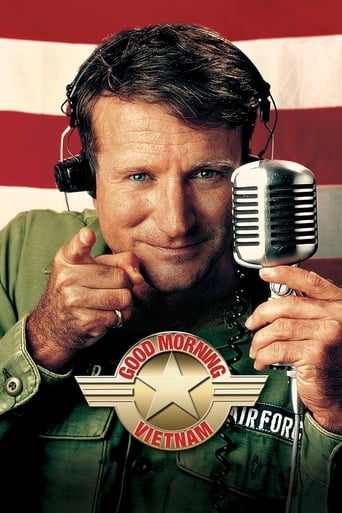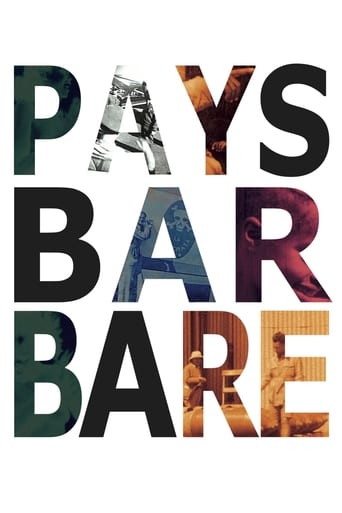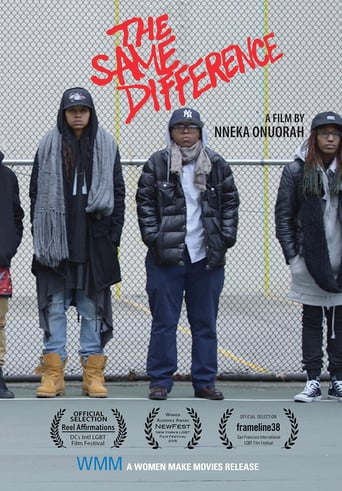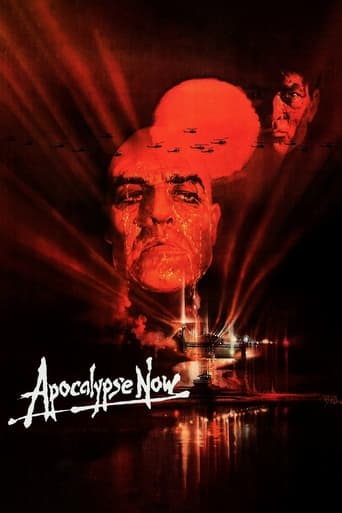Last Days in Vietnam (2014)
During the chaotic final weeks of the Vietnam War, the North Vietnamese Army closes in on Saigon as the panicked South Vietnamese people desperately attempt to escape. On the ground, American soldiers and diplomats confront a moral quandary: whether to obey White House orders to evacuate only U.S. citizens.
Watch Trailer
Free Trial Channels
Cast


Similar titles
Reviews
Highly Overrated But Still Good
Good start, but then it gets ruined
Excellent, Without a doubt!!
Great story, amazing characters, superb action, enthralling cinematography. Yes, this is something I am glad I spent money on.
A pretty good description of the fall and evacuation of South Vietnam in 1975, including newsreel footage, maps, observations of witnesses, and interpretation by expert talking heads. It's balanced and objective but it pulls no punches.All this happened forty years ago and now students read about this momentous war in history books, I guess, so maybe a brief context should be offered.Vietnam was divided into the communist north and the corrupt south. The south also had guerrilla fighters who were disrupting everyday life and committing foul deeds. They were aided by the regular army of North Vietnam.In the mid 1960s, President Lyndon B. Johnson decided it was time to put an end to the communist aggression and began to send troops and other facilities to South Vietnam, almost half a million men. It didn't work out and a peace treaty was finally signed in 1973. The peace was to be managed by the South Vietnamese government with American assistance in case of a resumption of aggression by the north.That treaty, guaranteeing the south's independence, was signed by President Richard Nixon, whom the north feared. As soon as he was out of office, the north attacked South Vietnam again. The American public, fed up with ten years of a brutal war and the loss of 58,000 dead and 130,000 maimed, were not about to interfere.The South was unable to properly defend itself despite American equipment. Leadership in the dictatorial South Vietnamese government and military was poor and riddled with communist spies and sympathizers. Eventually the drive by the army of North Vietnam reached the southern capital of Saigon and the remaining American staff, as well as every Vietnamese family who had been associated with them, scrambled frantically to escape in every way possible. The North Vietnamese were fond of mass executions.Whatever "order" there was in the escape was due to plans organized and executed without the ambassador's knowledge, by his own staff and by State Department personnel. The ambassador continued to insist that talk of evacuation was defeatist. When an unauthorized flight of South Vietnamese military men and their families reached the Philippines, the man responsible was fired.That "evacuation" is the subject of this documentary. Much of the responsibility is pinned directly on the ambassador, Graham Martin, who had formulated no plans for an escape because he believed the army of the north would never reach Saigon. And it was a most humiliating mêlée, with terrified people, men, women, and babies, hanging on to departing airliners during take off runs and falling to the tarmac.A task force of some fifty ships stood offshore from Saigon. Only Americans were to be evacuated, but each helicopter was mobbed by desperate and loyal South Vietnamese civilians. Not just high ranking Vietnamese military but the wives and families of Americans, their tailors and cooks. Helicopters with hangers on dangling from their skids left from the roof of the American embassy and other locations. So many helicopters landed on the decks of one ship that, in order to make room for the next arrivals, the first arrivals were pushed overboard.The media photos and the videos shown at the time give an impression of near chaos and the impression seems to have been accurate enough. The evacuation was a pitiless process. But then the whole war -- which had lasted thirty years for the Vietnamese -- seems mindless in retrospect.
After building enough history to emphasize about the exodus event itself the movie nicely serves the incredible sub stories that happen during the incident. I really like the movie's approach of previously serving the interviews without giving out the speaker's names, building up the start of their opinions and then weave together all those sub stories into link to the greater story of the event. What makes this movie very good is that the movie makers were able to obtain many authentic footage and photographs that give visuals to the stories told by the interviews.This makes the movie deeply visual, without having to resort to other ways to invoke the drama and emotions.
One of the most reviled wars in American history, in term of involvement, is explored through the eyes of sympathetic humanity toward its last days.The war in region known as Vietnam stretched nearly thirty years – and in the Last Days in Vietnam, filmmakers show the chaotic and desperate final weeks before and after the fall of Saigon.Nearing 1975 the war in Vietnam was supposed to be finished through the signing of the Paris Peace Accords. However, North Vietnam continued the offensive and in doing so, violated the treaty. Slowly descending toward the South Vietnam capital of Saigon, and with US troops withdrawing, the scramble for safety intensified. In the final weeks, American soldiers and diplomats stationed in the area are confronted with a moral predicament: obey direct orders from the Executive Branch to only evacuate US citizens and condemn their Southern Vietnamese allies to an unspeakable end OR ignore orders, risk treason, and save as many lives as they can.As someone born close to fifteen years after the end of the Vietnam War, the severity and desperation of that time is but a lesson from a history book for me. I am too young to know about Vietnam extensively, and unfortunately the American public education system rarely catches up to near-current history.The documentary, Last Days in Vietnam, lacks the minute details of a backstory in the opening of the film to catch uninformed viewers up to speed to fully comprehend the complete gravity of the situation during this time. Last Days in Vietnam pretty much wastes no time and jumps right in to the withdrawal of troops and consequential impacts upon the South Vietnamese. From then on it is a fast-paced and suspenseful account of the courageous and hopeless efforts to save civilians while expressing the genuine reverence US soldiers has and have for their allies, who the US government had no direct objective to rescue.Last Days in Vietnam is heart felt and comprehensive, detailing the accounts of those final days and weeks through video, pictures and first-hand personal narratives. The simultaneous use of real chronicles with video and photography makes for a powerful and engaging experience for the viewer.Though the film mentions in passing, the harsh reality and ultimate consequence of war, human lives, especially in the face of imminent conquering and defeat – it does not delve deeper. Nor does Last Days in Vietnam review those civilians who were unable to be rescued or had unresolved resentment toward the Americans for abandoning them. Without these key unexamined pieces, Last Days in Vietnam ends up feeling like an American propaganda documentary – informative but one-sided.Please check out our website for full reviews of all the recent releases and awards contenders.
Rory Kennedy is a masterful story teller, and has combined that talent with historical accuracy in this engaging and truthful documentary. Having been a former AP reporter in Vietnam, I can verify that the US evacuation in 1975 is a little told story---a critical element of the war story, but often disregarded in the annuls of this war. But the evacuation is a catalyst for Ms. Kennedy to recreate the dynamics of how easy it is to get into war, but how difficult to get out. For Vietnam veterans, often not wanting to talk about their war experiences, Ms. Kennedy deftly interweaves the soldiers stories who were there, with an out of touch US ambassador who refused to believe that Saigon would ever be defeated, to a Congress that blocked any more funding to support a falling regime. But the soul of this story is how they all were morally and personally torn by leaving behind many of their Vietnamese counterparts who could not be evacuated in a very hasty and uncoordinated US departure. To add another original dimension, one of the US Kirk navy men had hours of 8mm footage of the evacuation that was uncovered in his attic and remastered by Ms. Kennedy for use on the documentary. One of our soldiers spoke for many of our troops when he said "that he sometimes even dreamed in Vietnamese." In one of the same, this may have been a small part of the war's history, but at the same time epitomized the entire war in 98 minutes of drama, skilled cinematography, stunning resolution and sound, and the riveting pain of war. As an educator and child advocate, I would urge that this be used as a resource in every social studies, history, and political science class rooms in the country.

